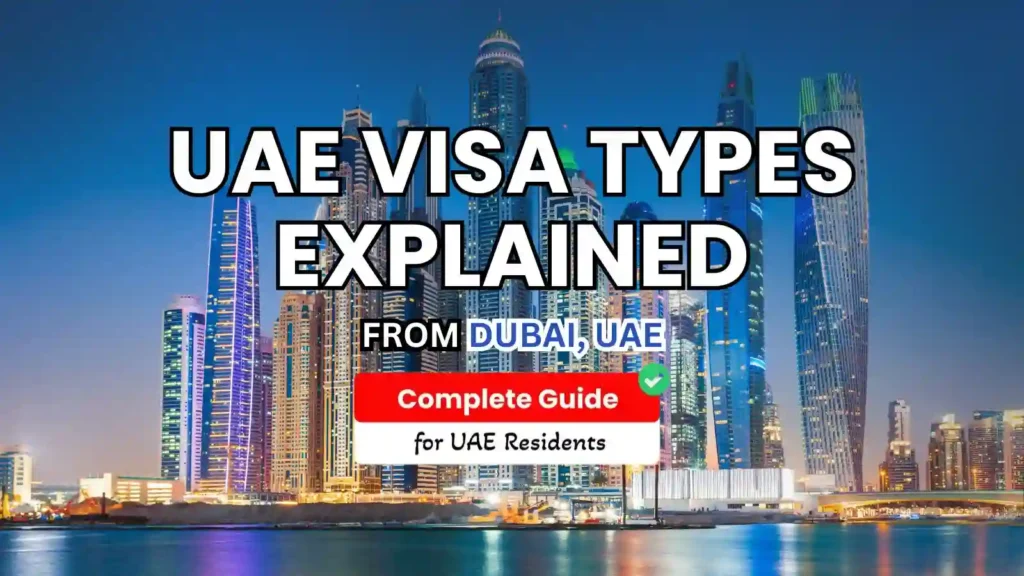
Visas feel a bit like phone chargers—there are many types, and you need the right one for the job. Before you click “apply,” decide why you’re coming and how long you’ll stay. I like a simple two-step check: purpose (tourism, work, study, long stay) and proof (who’s sponsoring you, what documents you’ll show). Once that’s clear, the rest is just tidy paperwork and good timing.
Tourist visa
Short holiday, simple plan. Tourist visas usually come in 30- or 60-day flavors, and you can often extend inside the country. If your passport isn’t eligible for visa on arrival, this is your lane. Apply through an airline, a hotel, a travel agency, or the official portals. My go-to move is saving all bookings as PDFs with clear names—future you will thank present you at the counter.
Visit visa
Same vacation mood, but you’re here for family or friends. Durations commonly run 30, 60, or 90 days. Your host (resident or citizen) applies through ICP or GDRFA. I keep a mini “host pack” handy: their Emirates ID, residency page, address, and a short invitation note. When the host’s details match your form perfectly, approvals feel smoother.
Visa on arrival
Some passports get stamped at the airport—no pre-application needed. Validity depends on nationality. It’s the breeziest option, but don’t wing it: check eligibility before you fly and make sure your passport has six months’ validity. I also carry printouts of onward tickets because “it’s in the app” is great until your battery says otherwise.
Employment visa
Job first, visa second. Your employer sponsors and handles the heavy lifting with MOHRE and immigration. You’ll do medicals and an Emirates ID step, then convert to residency. Keep copies of everything your HR team submits; it helps if you switch jobs later. My rule here: answer HR emails fast and keep all originals safe—contracts, offer letters, and degree attestations love neat folders.
Golden visa
Think long-term. Golden visas (often 5 or 10 years) are for investors, entrepreneurs, highly skilled professionals, scientists, top students, and similar standout profiles. No local sponsor needed, and family sponsorship is a big plus. The best part is stability: fewer renewals, more breathing room. I treat the application like a pitch deck—clean evidence, clear numbers, simple story.
Green visa
This one’s for skilled workers, freelancers, and investors who want residency without an employer sponsor. Typically five years and designed for modern, flexible careers. If you live by contracts rather than a single payroll, this path can fit well. Keep your portfolio sharp—contracts, invoices, and qualifications are your “office” on paper.
Student visa
Enrolled at a UAE university or college? This visa rides alongside your study plan. You’ll show an acceptance letter, proof of funds, and a valid passport; the school often helps with the process. A small habit that saves stress: store tuition receipts and enrollment letters in one cloud folder. When someone asks for proof, you’re two taps away.
Transit visa
Flying through and staying a short while? Transit visas are typically 48 or 96 hours and arranged via airlines. Perfect for a quick city taste. Double-check the rules for your passport and the airline’s conditions before you book that long layover—you want a skyline, not a surprise.
Retirement visa
If you’re 55+ and meet set savings, income, or property criteria, you can apply for a renewable five-year stay. It’s built for people who love the UAE and want to keep calling it home post-work. My gentle tip: confirm medical insurance early; it’s a common point people leave to the last minute.
Picking the right visa
Start with purpose, then eligibility. Are you visiting, working, studying, investing, or staying long term? Match that to the visa, then list the must-haves (sponsor, funds, insurance, invitation). If two categories look close, choose the one that best fits your actual activities—immigration likes clean matches, not creative interpretations.
Documents that make life easy
I keep a “UAE Visa” folder with: passport scan, passport photo in the right size, Emirates ID (if applicable), itinerary, hotel bookings, insurance, bank statements, and any sponsor letters. File names matter: “Passport_FirstLast.pdf” beats “scan1234.jpg” every time. And yes, print a set. Printers are annoying—until they save your day.
Timelines and extensions
Apply early, especially around holidays. Even fast systems slow down when everyone’s traveling. If your visa type allows extensions, set calendar reminders a week before the deadline. Nothing spoils a good trip like a last-minute scramble to fix an avoidable overstay.
Small tips with big payoff
Photos: get them professionally done to spec; it’s cheaper than a second trip. Names and dates: match them across every form. Sponsorship: verify spellings, license numbers, and contact details. Insurance: buy a policy that covers your full stay and save the PDF on your phone’s home screen. At the airport: keep your passport, visa, and return flight handy—you’ll look prepared because you are.
When rules change
Visa rules evolve. Before paying fees or booking flights, recheck ICP/GDRFA or airline pages for the latest. I also screenshot eligibility pages with the date; it helps if you need to explain a choice later. “I checked here on this date” beats “I thought it was fine.”
Final thoughts
Choosing a UAE visa is really about telling a clear, honest story: why you’re coming, how long you’ll stay, and how you’ll support yourself while you’re here. Pick the category that fits your plan, gather proof that matches the rules, and keep your documents tidy and consistent. Do that, and the process stops feeling mysterious and starts feeling manageable. Then you can focus on the good part—meeting friends, landing that job, starting a course, or simply watching the city lights slide by from a taxi, knowing your paperwork is exactly where it should be.
